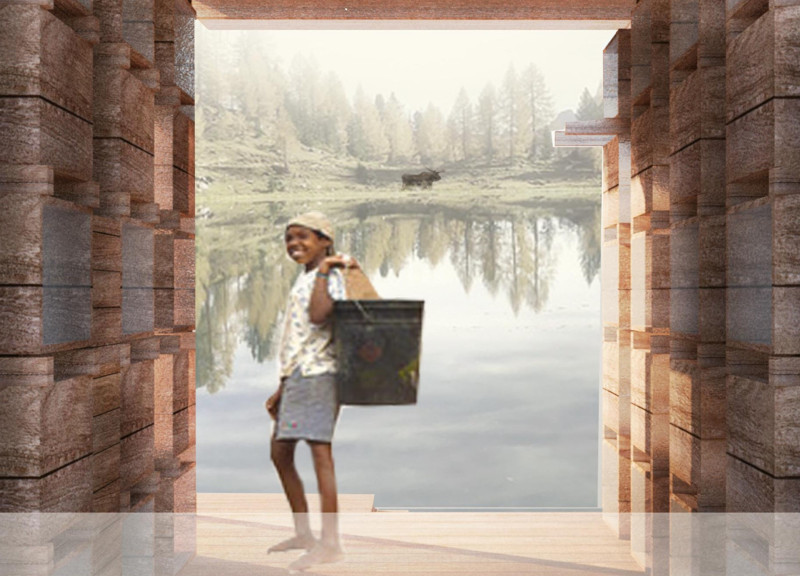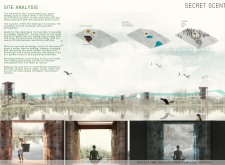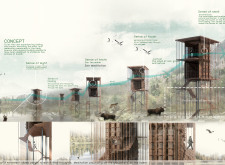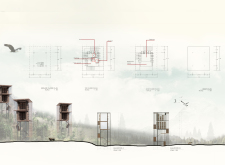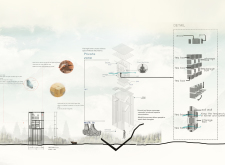5 key facts about this project
The primary function of the project is to provide a tranquil space for users seeking solitude and mindfulness practice. The architecture includes distinct zones for tea ceremonies, personal meditation, and communal gatherings, promoting a comprehensive engagement with the environment. Each area is carefully designed to draw upon the natural elements surrounding the retreat, fostering a seamless connection between the built environment and its natural counterparts.
Unique Design Approaches
The project stands out due to its approach in harmonizing architecture with the sensory elements of nature. The use of materials such as wood, clay brick, glass, and steel not only underpins structural integrity but also enhances the tactile, visual, and olfactory experiences. The choice of wood imparts warmth and a direct connection to the landscape, while clay brick offers insulation, maintaining comfort throughout various weather conditions. Glass elements provide unobstructed views, fostering transparency and an immersive relationship with the surrounding nature.
Another unique aspect is the design’s focus on sensory stimulation through the architectural arrangement. The integration of natural ventilation allows the aromas of tea and local flora to permeate the space, enriching the auditory and olfactory environment. Additionally, the multi-level spaces enable varied experiences of solitude and community interaction, allowing users to customize their retreats based on personal needs.
Architectural Integration and Environmental Considerations
The design thoughtfully incorporates natural topography and water features, utilizing them as integral parts of the experience. The buildings are positioned to maximize views of the lake and forest, guiding the users’ focus on the calming landscape. Pathways and outdoor spaces are designed to facilitate easy navigation while prompting interaction between visitors and the surrounding nature.
This project also demonstrates a commitment to sustainability and environmental sensitivity. By utilizing locally sourced materials and integrating energy-efficient systems, the retreat minimizes its ecological footprint while enhancing the user experience. The architecture supports not only individual wellness but also broader ecological considerations.
For a comprehensive understanding of the architectural design, materials used, and structural elements, readers are encouraged to explore the project presentation further. Key details such as architectural plans, architectural sections, and specific architectural ideas provide deeper insights into the design rationale and its execution.


